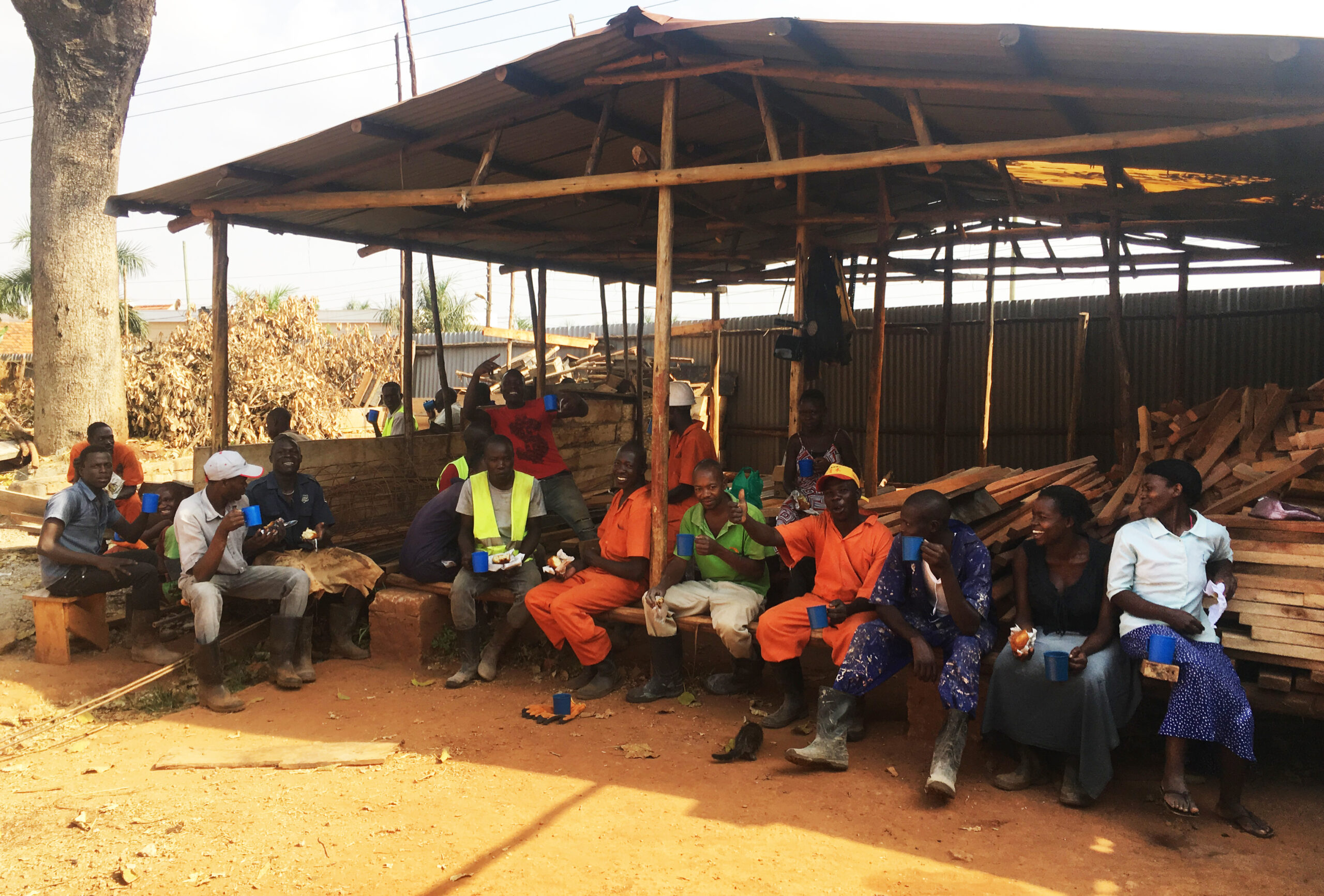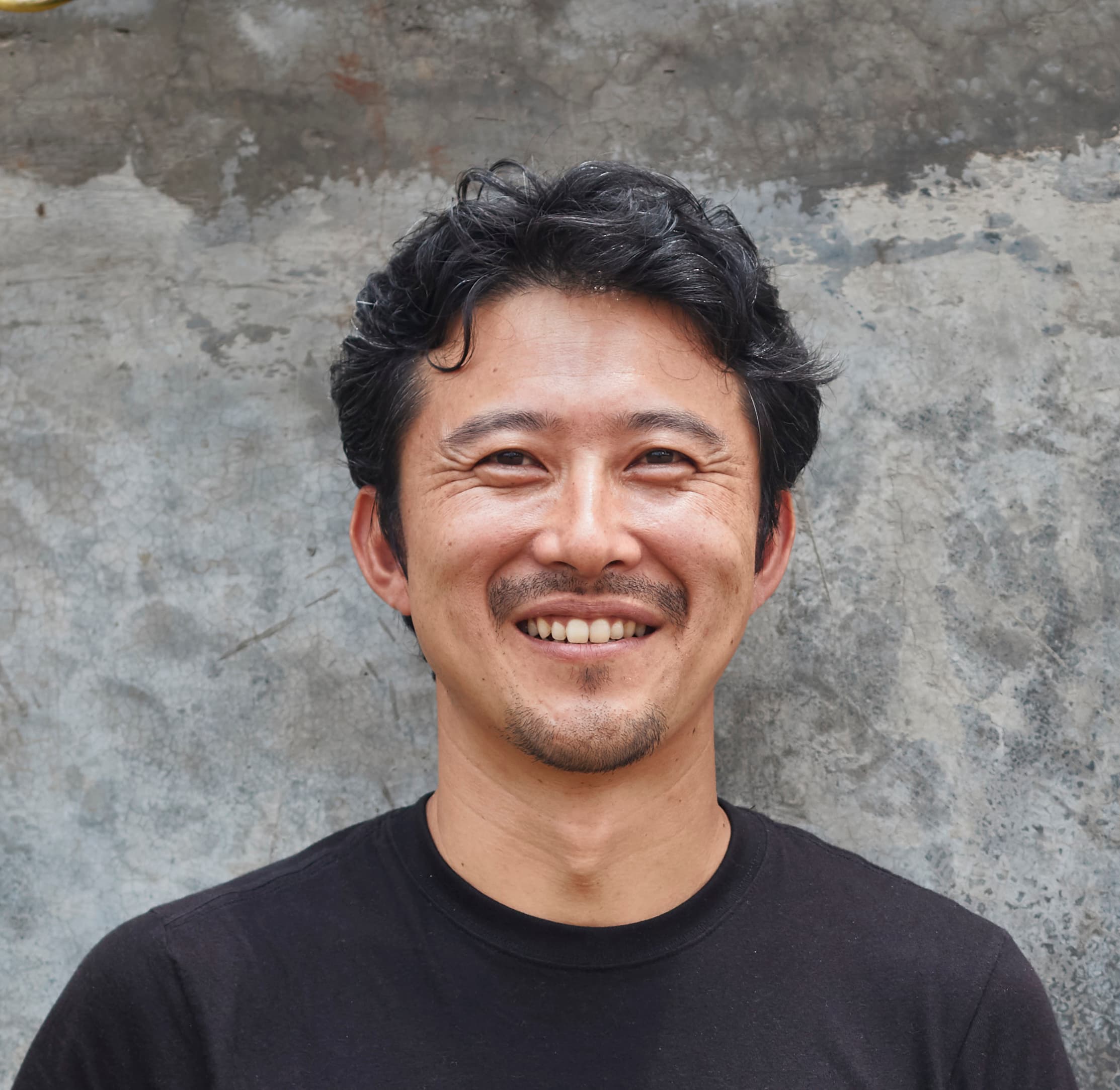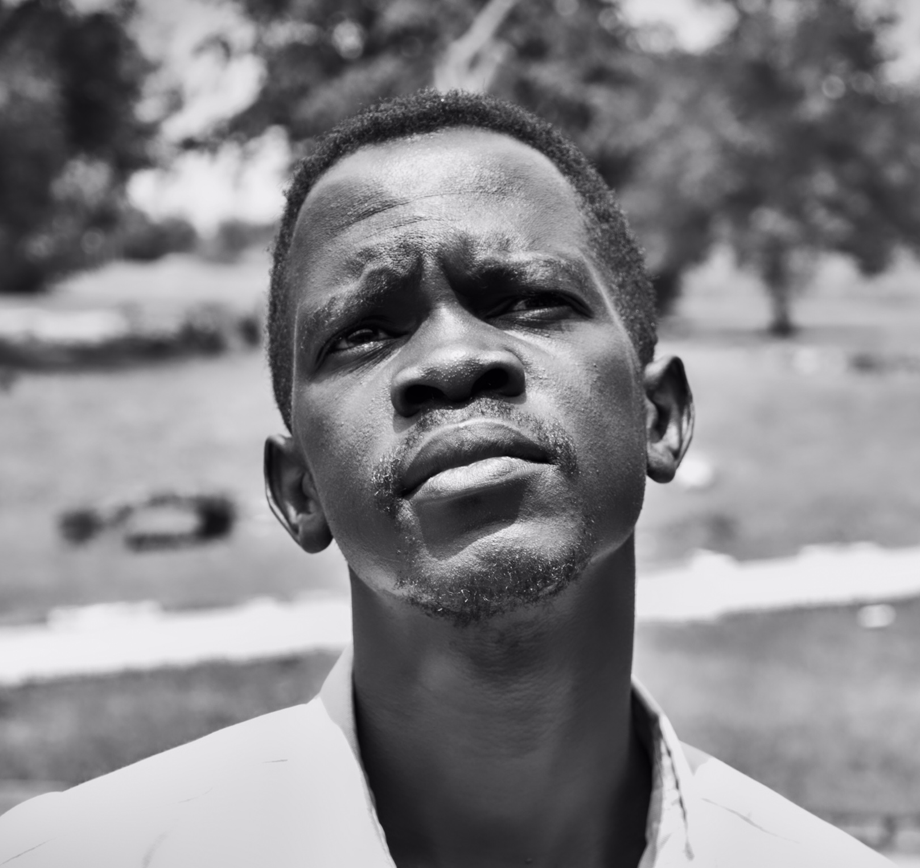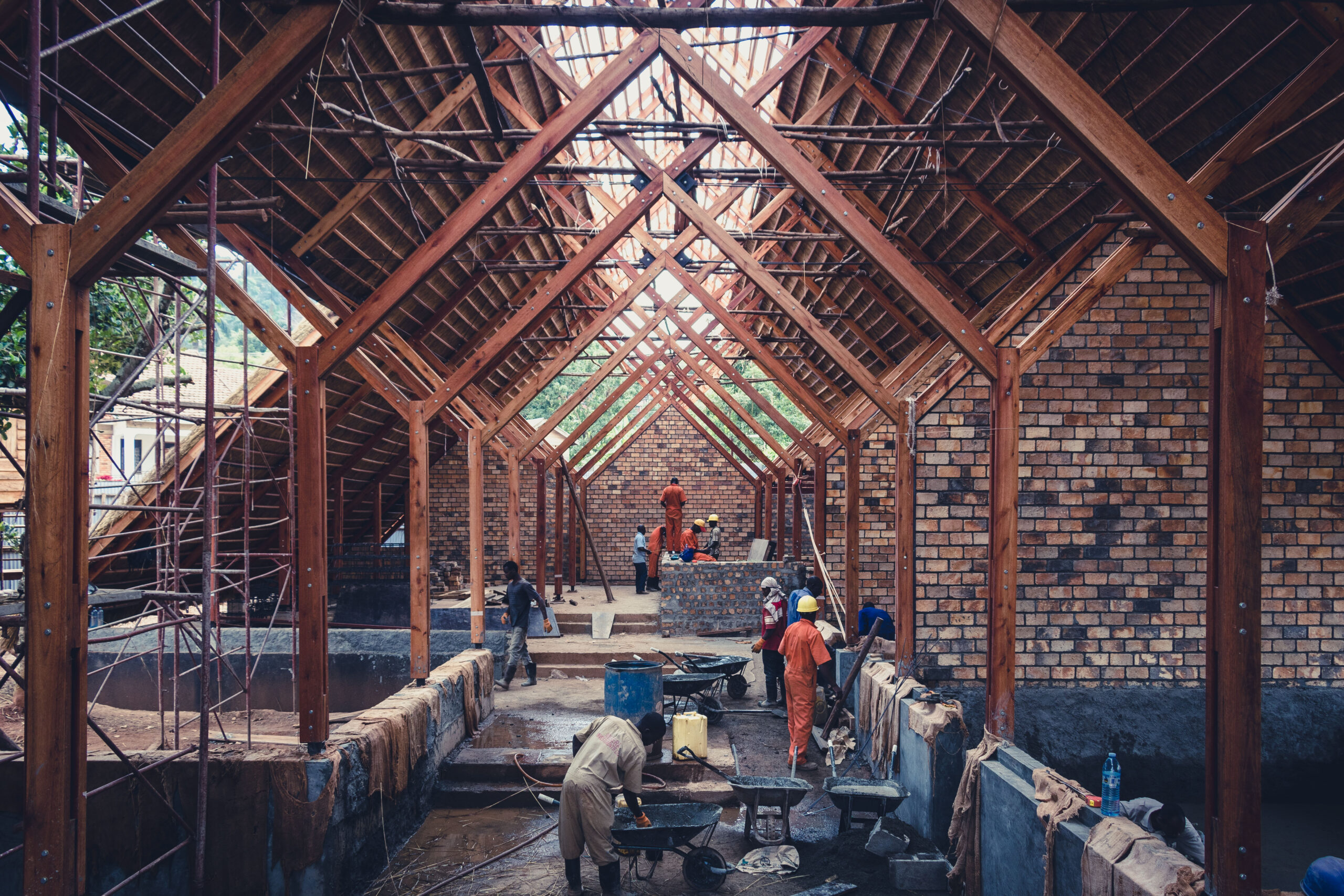People making architecture -Kenchikushi 7.2020
原文で表示 (日本語)Cover: Welder Brian cutting steelwork with a grinder
Photo:Timothy Latim.
There are many people involved in construction. Once construction begins, people come out of nowhere to look for work. Most of them are day labourers as there are no job placement agencies. Carpenters, welders and bricklayers, people with no specific skills and who do miscellaneous work, and even women who cook the midday meal, work from early in the morning until sunset every day for a wage of about $2 to $10 a day (including lunch). Many of the workers are migrants from the countryside and have different native languages and religions, but spending time with them on the site gives us a glimpse into their personalities and lives.
 A mock-up of the external lighting on site.
A mock-up of the external lighting on site.
One of the craftsmen I met on the site was Brian, a welder. A welder doesn’t just mean a welder, he can do anything with ironwork. There are a number of small workshops in the city that work with iron to make furniture and gates, and Brian happened to be one of those who was called to the site by one of the workshops in Kampala. Many of the welders’ workshops are run by relatives and the skills are passed down through the family. There are not many school-educated craftsmen and communication in English is often difficult. He, too, learned his craft in the family workshop and was a workshop assistant when he first came to our site.
We were fed up with the welders up to that point. Even if they had the drawings, they would make their own interpretations of the work, and if there was a dispute, they would disappear. To be honest, we thought all welders were the same. However, he brought the drawings with him, expressed that he didn’t understand the unfamiliar drawings, and asked us eagerly what we wanted to do about it. Brian helped us communicate with the non-English speaking craftsman and gradually became the voice of our ideas.
He is a Muslim and works silently without food, even when he is fasting. He could make samples of most things-steel sashes, handrails, even light fittings-if he drew a sketch, and he gave us his suggestions and opinions on strength and beauty. Thanks to this, we knew that some things could be made on site using a combination of marketable steel materials without the need for imported off-the-shelf products. For the second site, Yamasen (a Japanese restaurant), I called him directly on his mobile phone and asked him to come to the site. Many times we had to build hardware, handrails, lighting fixtures, etc. with only sketches and his input. He became an indispensable partner in the project, and to this day he is just a phone call away when he needs to work on steel.
Some of his work is less precise than others, and if one were to ask him to be a skilled and highly skilled craftsman, he is not. However, working with a craftsman who wants to create something like him is one of the great meanings of building.
 Craftsmen during break time
Craftsmen during break time
Photo : Ikko Kobayashi,Timothy Latim
Source : “Kenchikushi” Jul 2020




